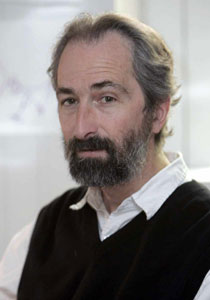
“Mutation and Evolution,” will be presented by National Academy of Sciences member Michael Lynch, at 4 p.m., Nov. 30 at the Beadle Center. The seminar is free and open to the public. Lynch is a distinguished professor of biology at Indiana University.
Lynch will discuss the importance of understanding the mechanisms of evolution.
Lynch says: "Understanding the mechanisms of evolution and the degree to which generalities exist among phylogenetic lineages requires information on the rate at which mutations arise and their effects at the molecular and phenotypic levels.
"Although procuring such data has been technically challenging, high-throughput genomic sequencing is rapidly expanding our knowledge in molecular areas. With information on spontaneous mutations now available in a variety of organisms, general patterns have emerged for the scaling of the mutation rate with genome size, and support will be presented for the hypothesis that natural selection pushes mutation rates down to a lower limit set by the power of random genetic drift rather than by intrinsic limitations on repair mechanisms.
"Not only do larger, multicellular organisms have higher mutation rates/nucleotide site/generation than unicellular species, but gene structure in the former evolves in such a way as to become a larger mutational target. This sort of mutation-rate scaling with effective population sizes has implications for the rapidity with which various pathways can be exploited in adaptive evolution in different lineages, as well as consequences for the accumulation of deleterious mutations.
"The mutational-hazard hypothesis, which postulates that all forms of excess DNA impose a weak mutational burden, provides a compelling framework for interpreting a diversity of observations on phylogenetic patterns of genome size and gene-structural complexity. In addition, recent work provides strong evidence that fundamental features of protein evolution, including the tendency to evolve multimeric complexes, is dramatically altered in lineages experiencing high levels of random genetic drift. Taken together, empirical observations combined with population-genetic theory suggest that a substantial fraction of evolutionary change at the molecular and cellular levels can only be understood in a framework that acknowledges the central role played by the major nonadaptive forces of evolution – mutation, recombination, and random genetic drift."
More details at: http://go.unl.edu/txw